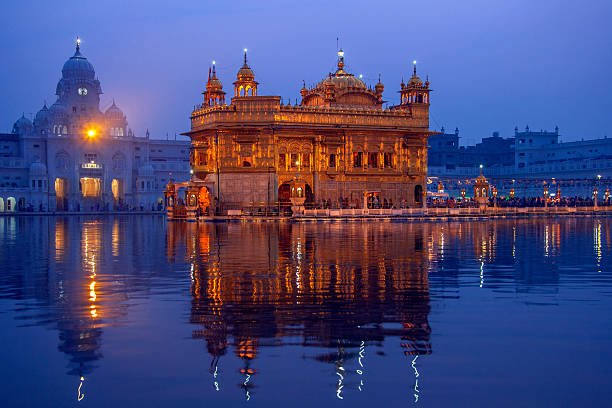Hey readers! Welcome to Trendphobia travel blogs. India, a land steeped in spirituality and rich cultural heritage, is home to numerous architectural marvels that showcase its grandeur. Among these, the Golden Temple, also known as Sri Harmandir Sahib, shines as a sacred jewel. Situated in the city of Amritsar, Punjab, the Golden Temple is a symbol of Sikhism’s spiritual and cultural significance. In this blog, we will delve into the captivating history, architectural splendor and the spiritual aura that envelops the Golden Temple.
Historical Significance

The Golden Temple holds great historical importance. It was founded by Guru Ram Das, the fourth Sikh Guru, in the 16th century. Over the years, it has witnessed significant events such as the compilation of the holy scripture, Guru Granth Sahib and the martyrdom of Guru Arjan Dev. The temple has been a center of spirituality, resilience and peaceful protests, making it an iconic symbol of Sikh faith and its pursuit of justice.
Architectural Marvel

The architecture of the Golden Temple is a blend of both Hindu and Islamic styles, reflecting the inclusive nature of Sikhism. Additionally, the marble and gold-plated structure stands majestically, immediately captivating visitors with its stunning beauty. Moreover, the intricate detailing, adorned with floral motifs and verses from the Guru Granth Sahib, further enhances its ethereal charm.
Also read The Hidden Gems of Uttarakhand
Divine Atmosphere

Stepping into the Golden Temple complex is a profound experience. The serene environment, coupled with the soul-stirring hymns recited by the devotees, creates an atmosphere of tranquility and devotion. Visitors from all walks of life, irrespective of their faith, are welcomed with open arms. Langar, the community kitchen, serves free meals to thousands of people every day, emphasizing the principles of equality and selfless service.
The Healing Power of Amrit Sarovar

Devotees immerse themselves in its holy waters, seeking spiritual cleansing and physical well-being. The sarovar serves as a reminder of the sacredness of life and the importance of introspection and self-improvement.
You may also read Pilgrimage or Tourism: How Do People Travel?
Festivals and Celebrations

The Golden Temple is a hub of festivities throughout the year. One of the grandest celebrations is the Gurpurab, which commemorates the birth anniversaries of the Sikh Gurus. During this vibrant occasion, the temple is adorned with mesmerizing lights, and devotees enthusiastically participate in processions. The atmosphere becomes electrifying, brimming with devotion, joy and a strong sense of unity.
According to trendphobia, Visiting the Golden Temple is an experience that transcends religion and touches the depths of the soul. It represents the essence of Sikhism—equality, service, and devotion. The architectural magnificence, coupled with the spiritual energy that permeates the air, makes it a must-visit destination for seekers of peace and spiritual enlightenment. A visit to the Golden Temple is not just a journey to a physical place; it is a pilgrimage of the heart.
Frequently asked questions and answers
Q: Where is the Golden Temple located? A: The Golden Temple, also known as Sri Harmandir Sahib, is located in Amritsar, Punjab, India.
Q: What is the historical significance of the Golden Temple?
A: The Temple holds great historical importance in Sikhism. It was founded in the 16th century by Guru Ram Das, and it has witnessed significant events such as the compilation of the holy scripture, Guru Granth Sahib, and the martyrdom of Guru Arjan Dev.
Q: Can people from different faiths visit the Golden Temple?
A: Yes, the Temple welcomes visitors from all walks of life and all faiths. It promotes the principles of inclusivity and equality, allowing everyone to experience the spiritual and cultural richness it offers.
Thanks for reading.
You may also read:
